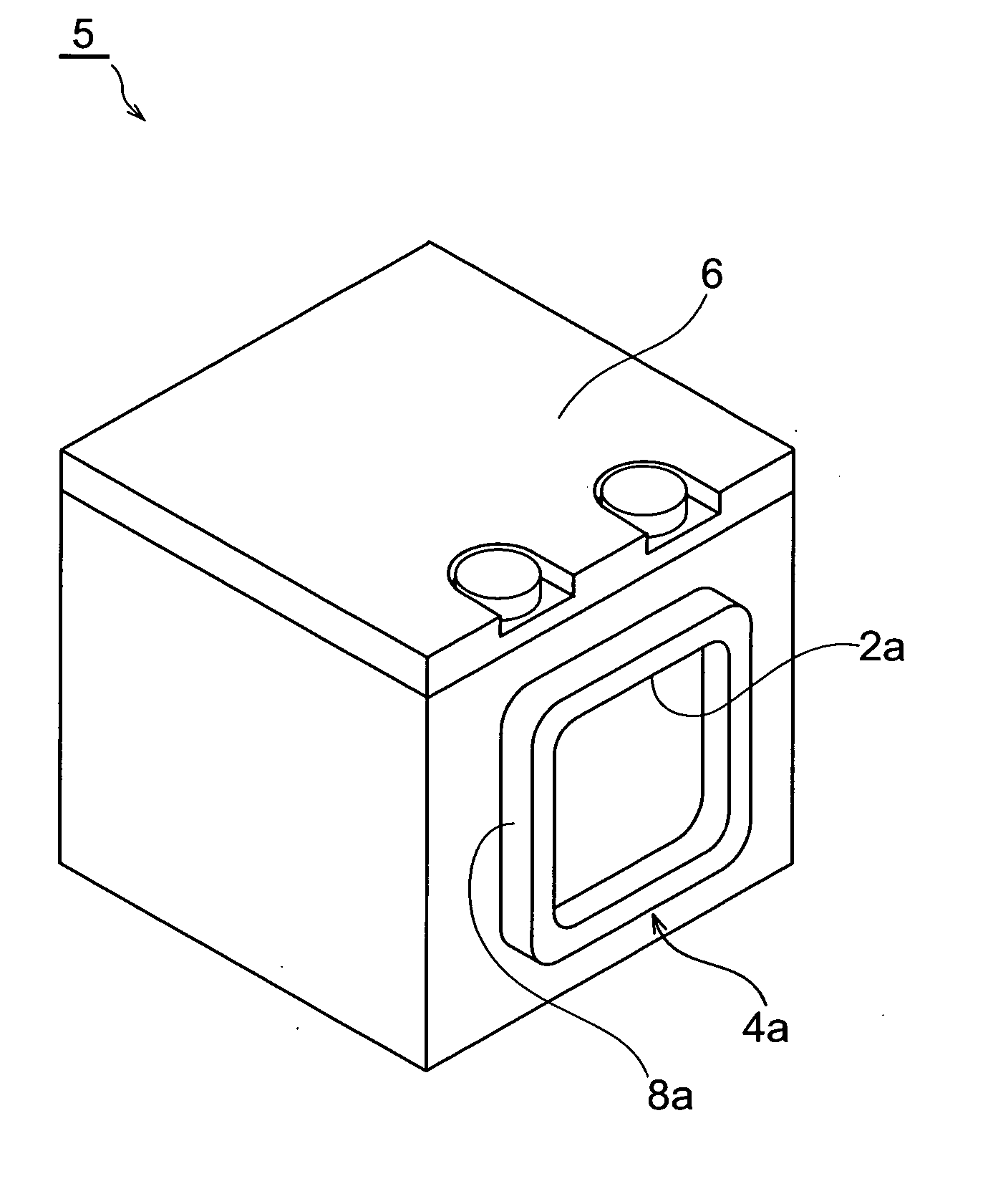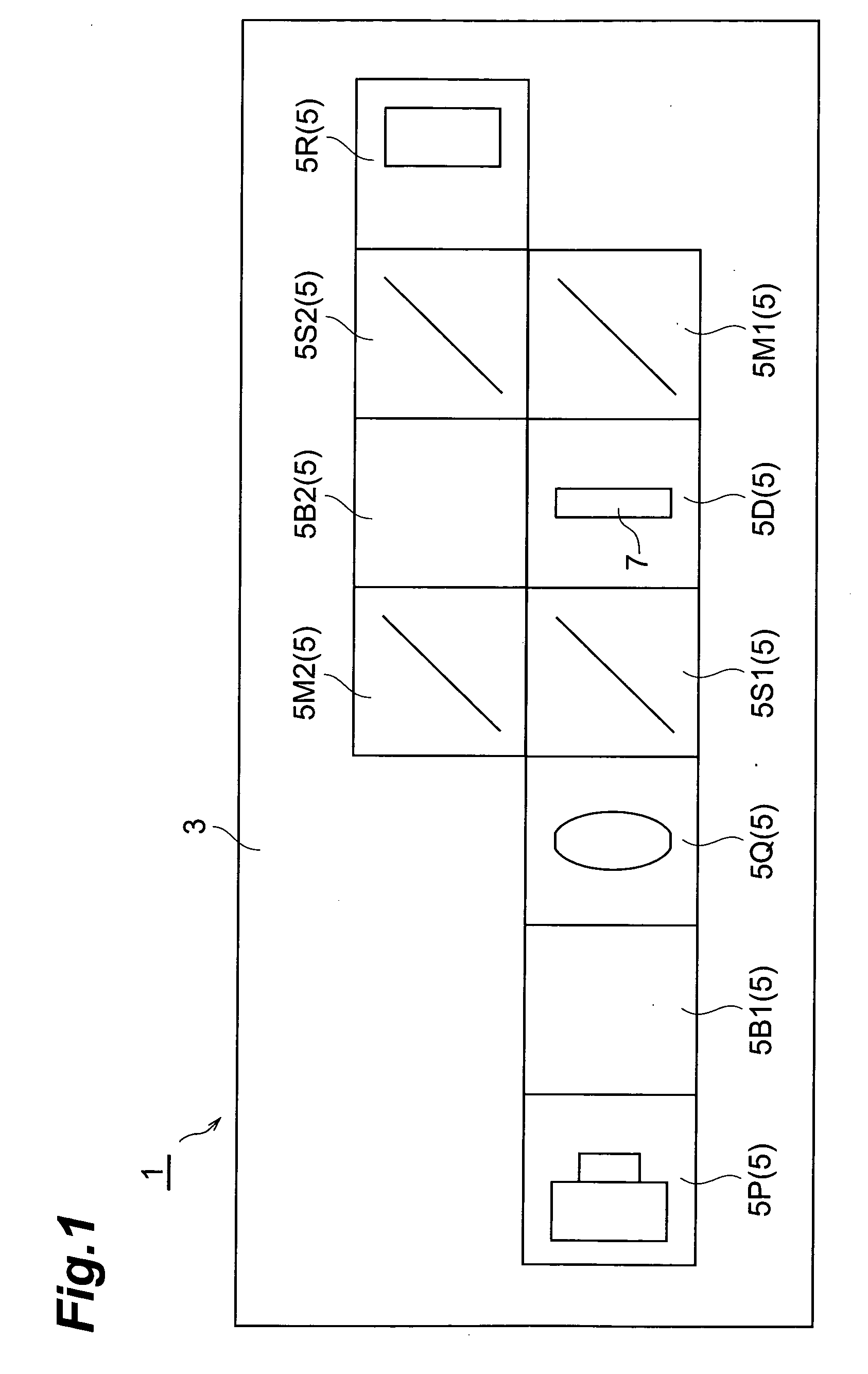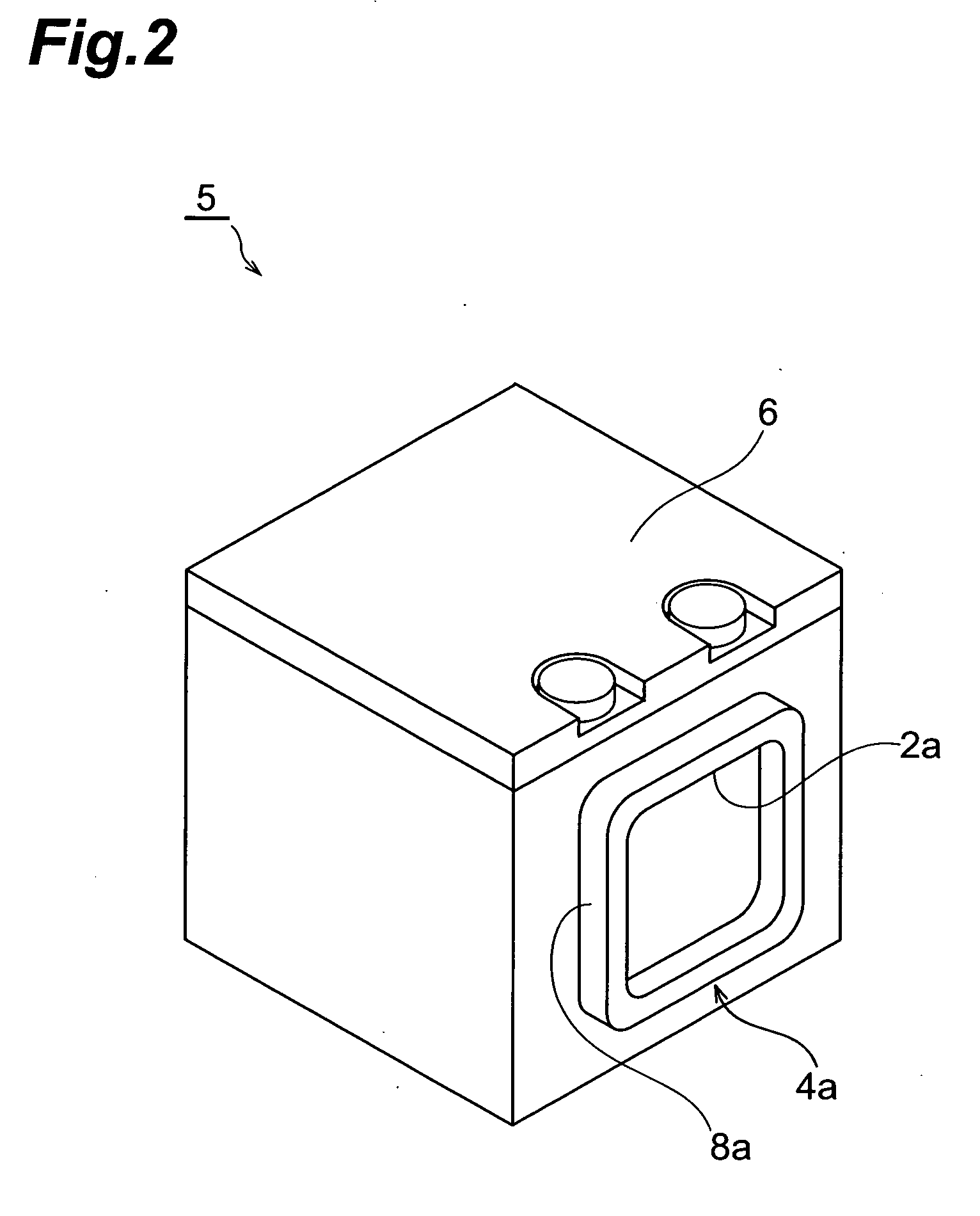Optical Part Holding Unit
- Summary
- Abstract
- Description
- Claims
- Application Information
AI Technical Summary
Benefits of technology
Problems solved by technology
Method used
Image
Examples
Embodiment Construction
[0030] An optical component holding unit according to a preferred first embodiment of the present invention will hereinafter be described with reference to FIG. 1 to FIG. 3. FIG. 1 is a schematic planar block diagram showing a Mach-Zehnder interferometer provided with optical component holding units according to the first embodiment of the present invention, and FIG. 2 and FIG. 3 are perspective views showing optical component holding units in FIG. 1. It is noted that in the descriptions of the drawings, identical or equivalent elements are designated by the same reference numerals to omit redundant description.
[0031] As shown in FIG. 1, the Mach-Zehnder interferometer 1, which is used for, for example, measuring the amount of distortion of a transparent body, includes a mounting base 3 and various optical component holding units (hereinafter described in detail) 5.
[0032] The mounting base 3 is made of metal such as aluminum and is a substrate formed in a plate shape.
[0033] The v...
PUM
 Login to View More
Login to View More Abstract
Description
Claims
Application Information
 Login to View More
Login to View More - R&D
- Intellectual Property
- Life Sciences
- Materials
- Tech Scout
- Unparalleled Data Quality
- Higher Quality Content
- 60% Fewer Hallucinations
Browse by: Latest US Patents, China's latest patents, Technical Efficacy Thesaurus, Application Domain, Technology Topic, Popular Technical Reports.
© 2025 PatSnap. All rights reserved.Legal|Privacy policy|Modern Slavery Act Transparency Statement|Sitemap|About US| Contact US: help@patsnap.com



